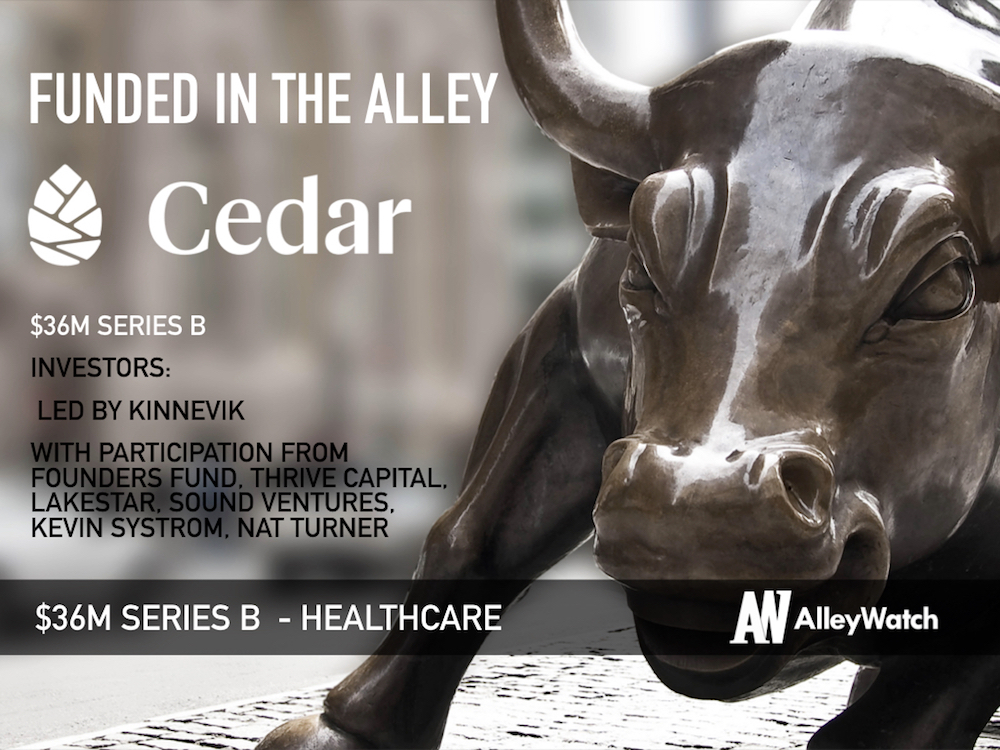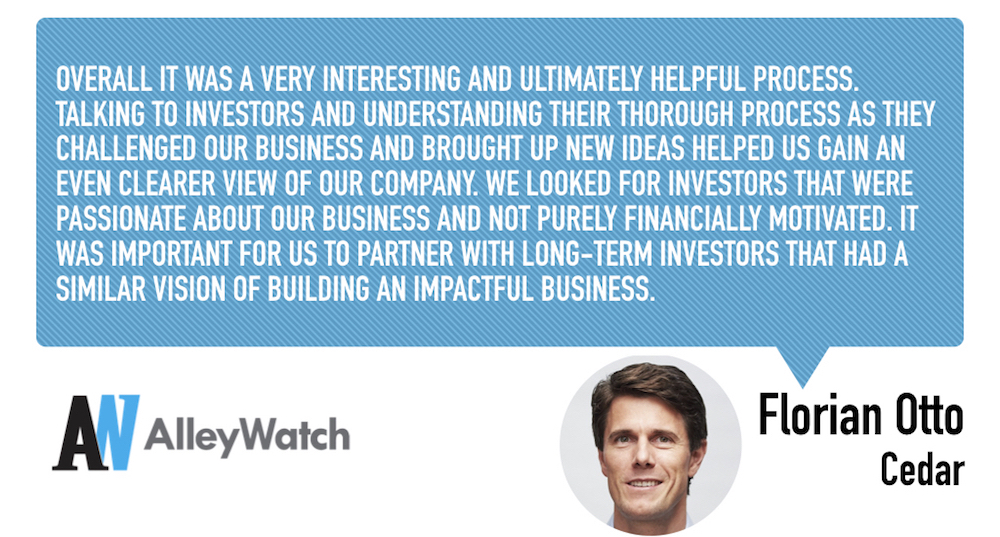Understanding bills should be simple and straightforward but unfortunately, that is not always the case, especially when dealing with medical bills. That is why Cedar is personalizing the medical billing experience with its consumer-centric technology that creates a clear list of itemized charges that’s easy to comprehend. Through its extensive data analysis, it helps physicians understand what method of communication (phone call, text, email) are most effective to contact a patient with respect to a bill. The opportunity for innovation in healthcare revenue cycle market is endless, and this market is poised to grow from $50B to $90B.
AlleyWatch spoke with CEO and cofounder Florian Otto to learn about its impressive growth and recent funding round, which brings the total funding amount to $49M over two rounds.
Who were your investors and how much did you raise?
This was our Series B and we raised $36M. The round was led by Kinnevik with participation by existing investors Founders Fund and Thrive Capital, as well as Lakestar, Sound Ventures, Kevin Systrom of Instagram and Nat Turner of Flatiron Health.
Tell us about Cedar.
If you think back to the last time you visited the hospital, you probably received a multi-page bill several weeks or even months after the visit. The bill was likely very complicated, with lots of numerical codes instead of one clear, itemized list of charges. At Cedar, we’re trying to fix this experience for both patients and physicians. Our platform combines data science and consumer-centric technology to alleviate collections challenges and improve billing operations for physicians and ensure a personalized billing experience for patients.
How is Cedar different?
We analyze millions of data points to inform how we communicate with and engage patients, in order to ensure an optimal response. For example, we can help physicians understand whether a patient is most likely to respond to a message about their bill received via phone call, text, email or paper mail, then send communication through the channel likely to derive the quickest payment.
 What market does Cedar attack and how big is it?
What market does Cedar attack and how big is it?
If you look at the overall healthcare revenue cycle market, there is significant opportunity – right now, it’s an estimated $50B market and expected to grow to $90B in the next four years. At Cedar, we’re focused specifically on the patient responsibility segment, or the amount collected directly from patients following their visit. The need for our solution is driven by the combination of patient dissatisfaction with the current medical billing experience, and a growing responsibility for individuals to pay for their healthcare.
What is the business model?
We work with our hospital and medical group customers to help them collect outstanding patient bills, in a way that’s simple and non-intrusive for patients. Upon checking in for their visit, patients are given the option to consent to receive notifications from Cedar, which is white-labeled on behalf of the provider. Our fees are performance-driven and aligned with patient and provider satisfaction.
What inspired the business?
My fiancé had a terrible billing experience after a short ER visit in Manhattan hospital. The two-hour visit resulted in three separate bills that were very difficult to understand. One of the bills ended up going into collections. I thought, if a first-tier hospital in Manhattan has such an antiquated billing technology, the entire industry must be broken.
How has the business changed since we last spoke?
We’re continuing to grow rapidly, which is exciting! Our client base includes Montefiore Medical Center, U.S. Anesthesia Partners, and Westmed Medical Group, among a number of other healthcare organizations across the country. Today, we’re interacting with nearly 100,000 patients nationwide on behalf of our clients, facilitating tens of thousands of billing transactions per month.
What was the funding process like?
Overall it was a very interesting and ultimately helpful process. Talking to investors and understanding their thorough process as they challenged our business and brought up new ideas helped us gain an even clearer view of our company. We looked for investors that were passionate about our business and not purely financially motivated. It was important for us to partner with long-term investors that had a similar vision of building an impactful business.
What are the biggest challenges that you faced while raising capital?
Cedar plays in a pretty specific segment of the healthcare system that many investors were not familiar with. We are a young company so we didn’t have 10 years’ worth of data to share. So, education on the market, size, challenges, and opportunities was important.
What factors about your business led your investors to write the check?
Our investors understood that the communication between the consumer and the healthcare system is broken. Everybody at some point has received a bill that was confusing and painful to pay. What ultimately got our investors excited was seeing our product solution, hearing feedback from patients, talking to our hospital clients and meeting our team.
What advice can you offer companies in New York that do not have a fresh injection of capital in the bank?
Businesses that have a clear product-market fit and opportunity to accelerate growth with additional capital should consider fundraising. However, there are many amazing businesses in New York that don’t need external funding. Those companies need to manage their cash-flow tightly, be scrappy and sometimes need to sacrifice growth for profitability (e.g. by asking customers to pay upfront). At Cedar, we will not change our scrappy, entrepreneurial mindset with the financing. But, the large capital raise will enable us to do long-term bets on product to ultimately improve the results for patients and healthcare providers.
Where do you see the company going now over the near term?
We’re continuing to hire! You can check out all open roles at cedar.com/careers. We’re also planning to launch new platform features and functionality this Fall that we’re very excited about.





